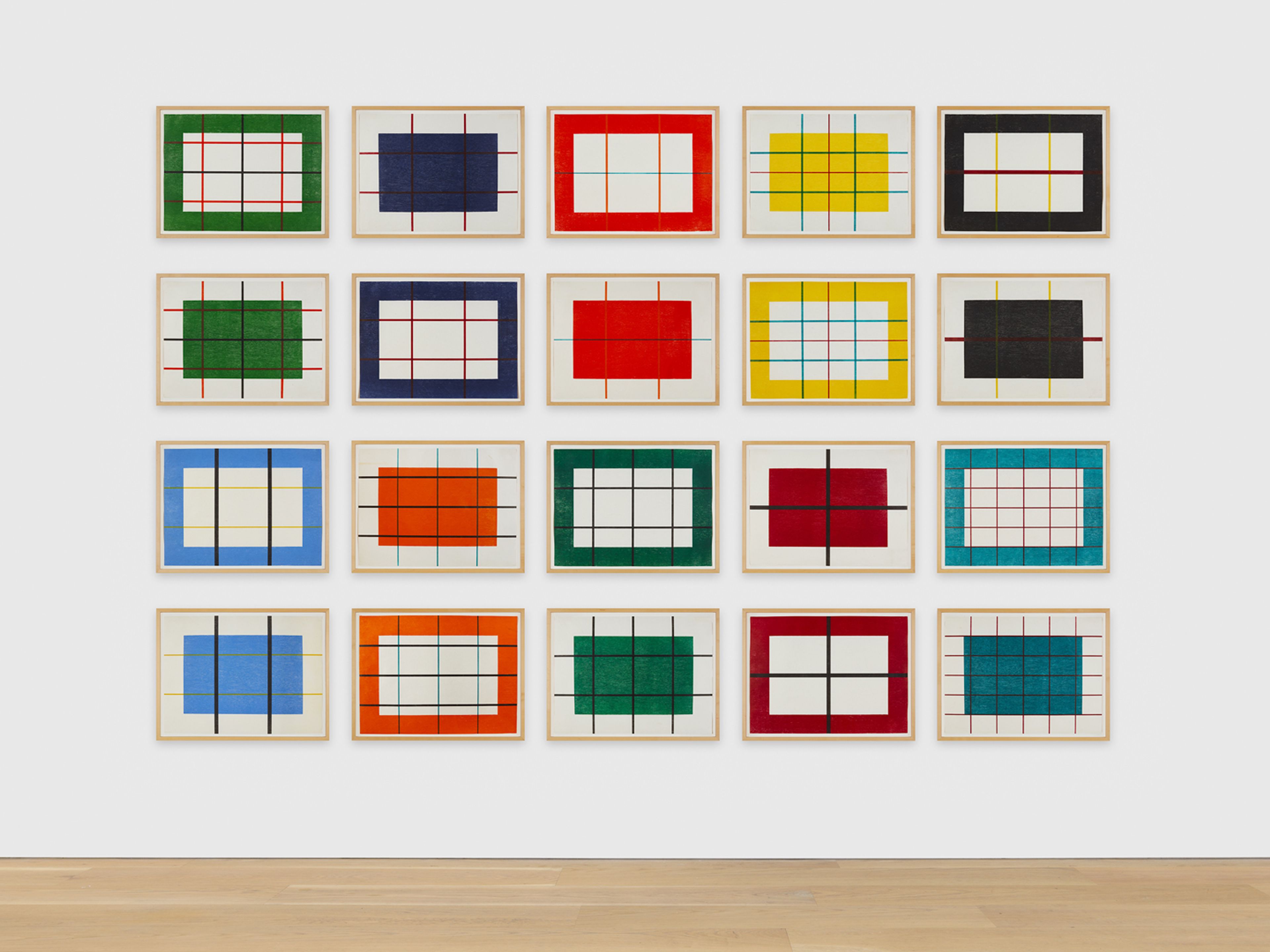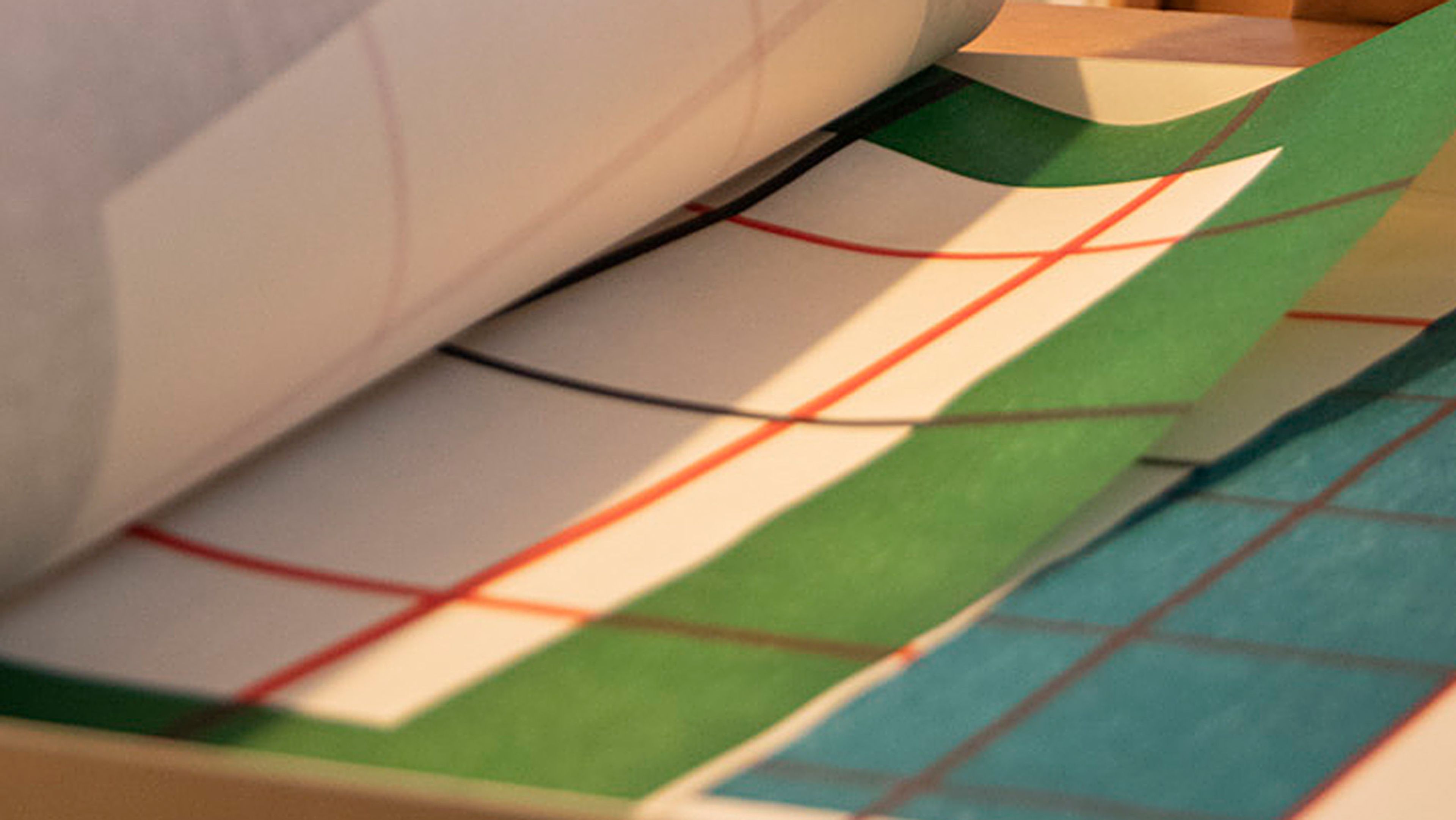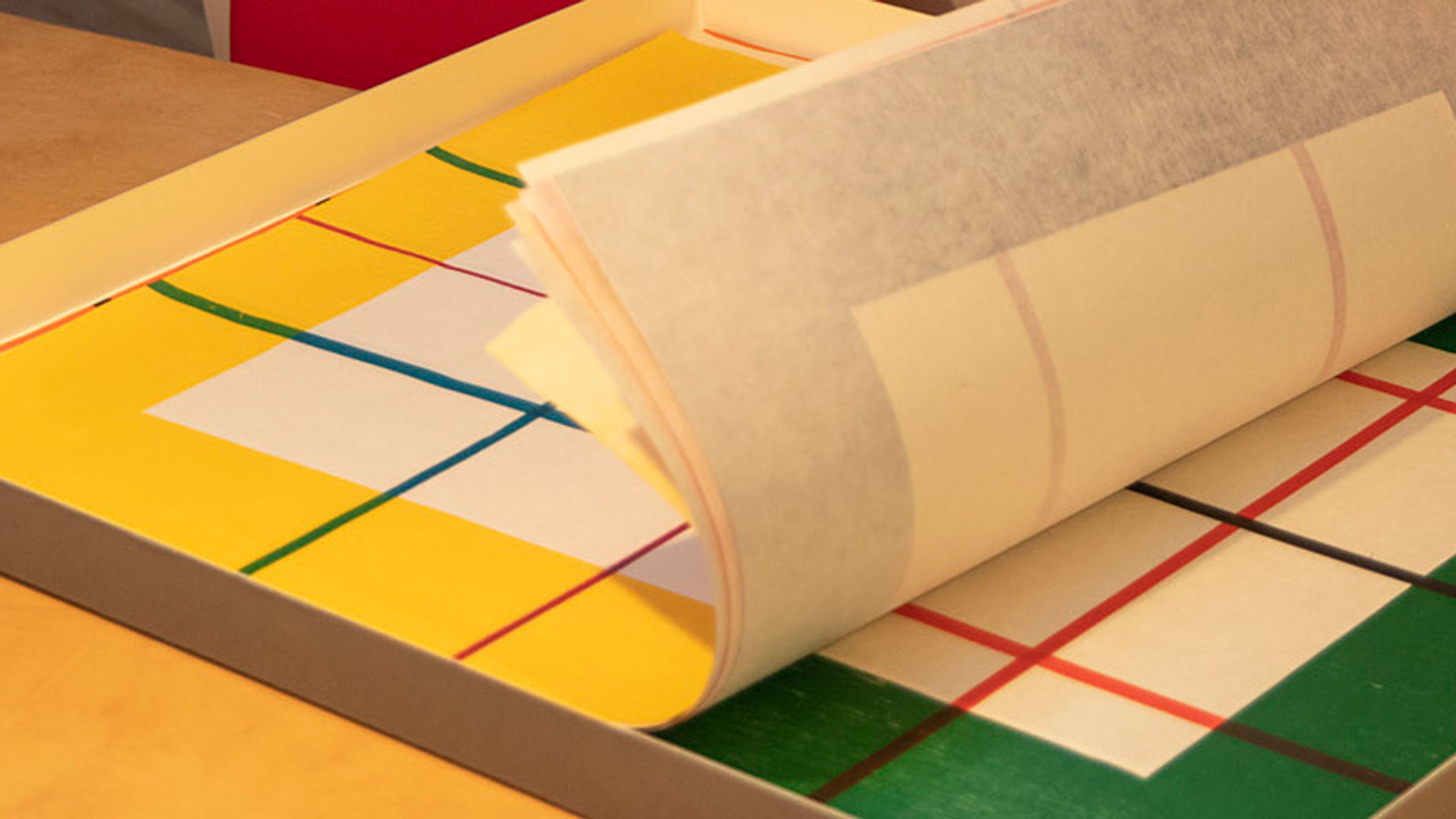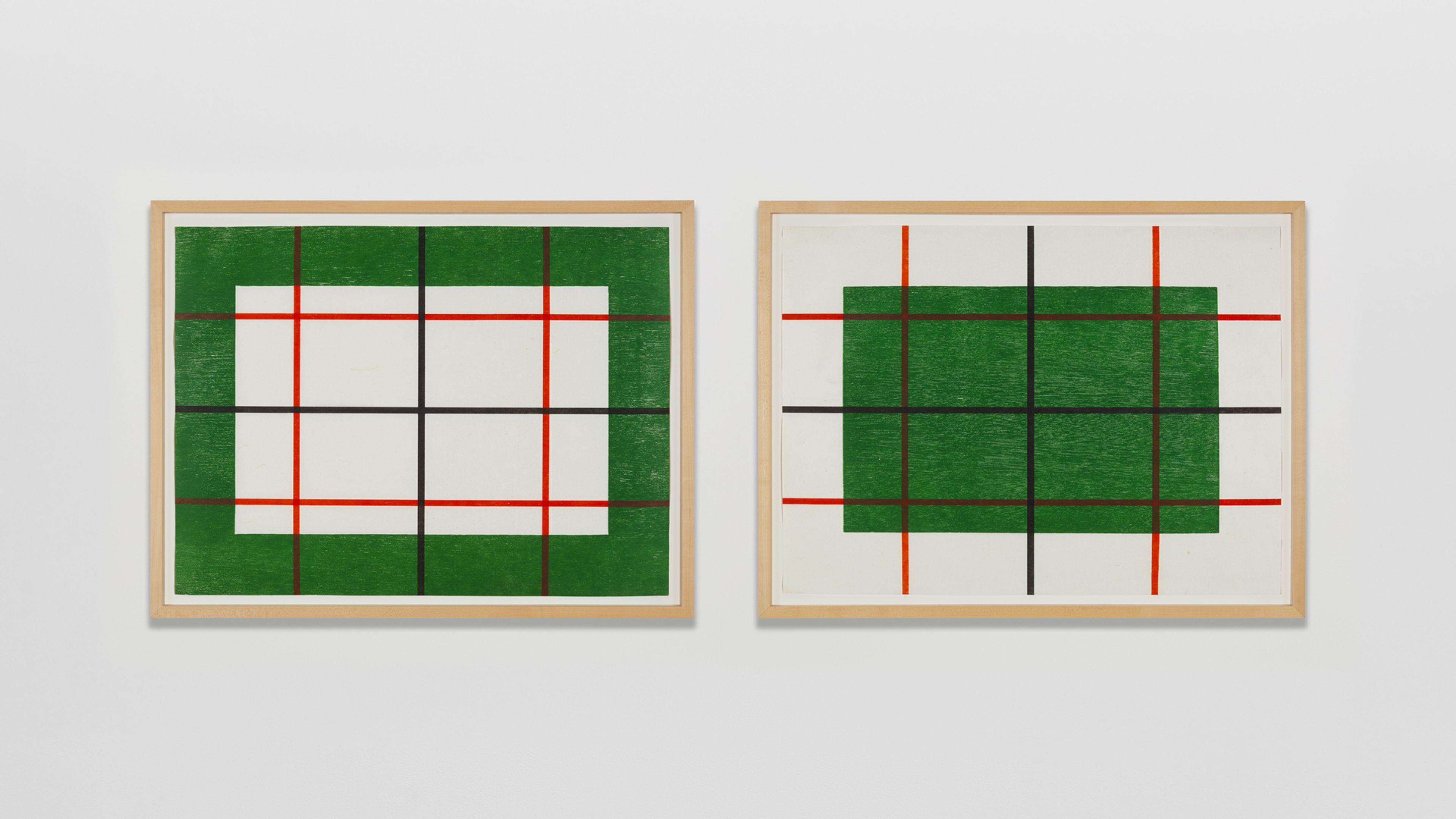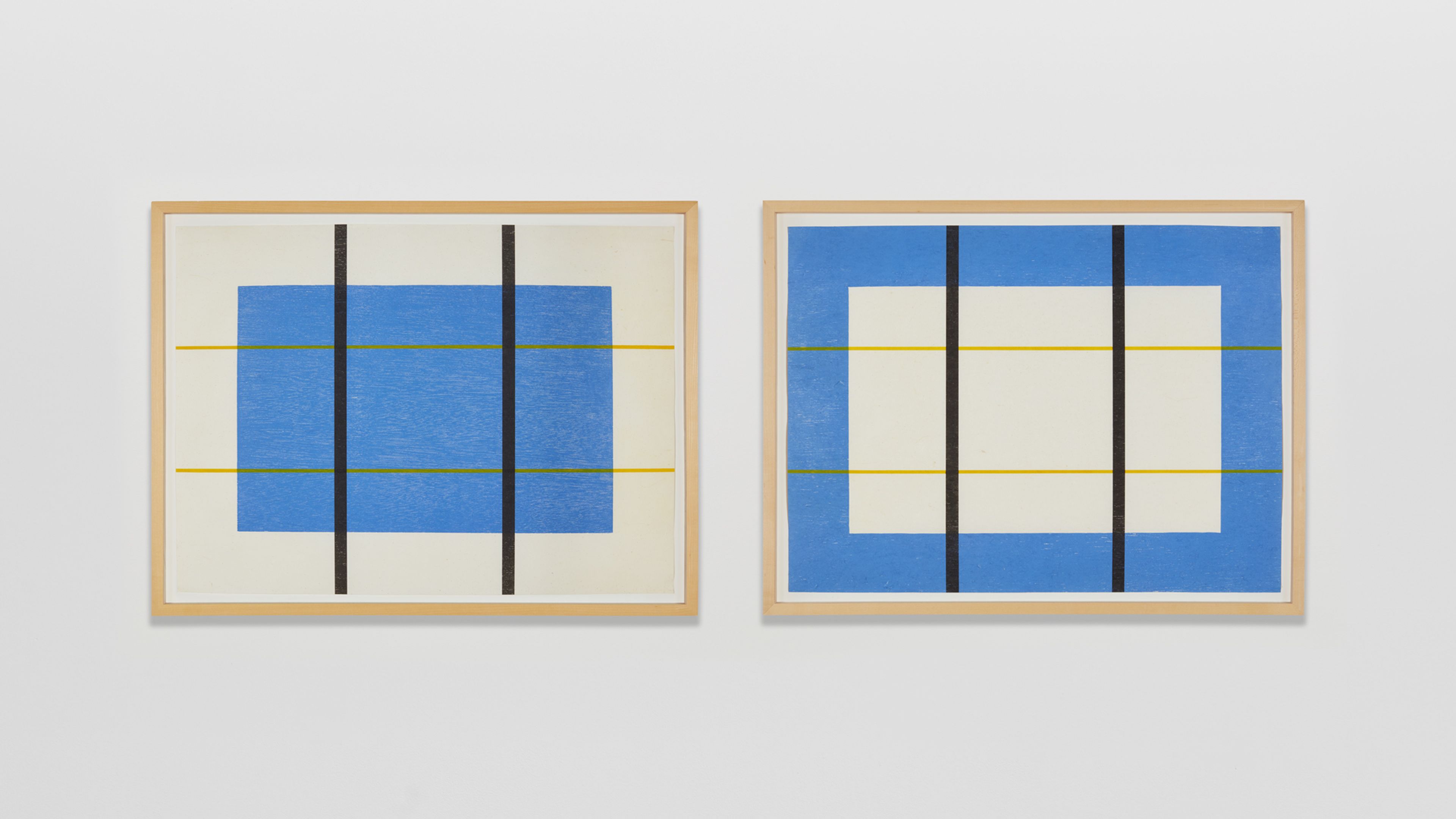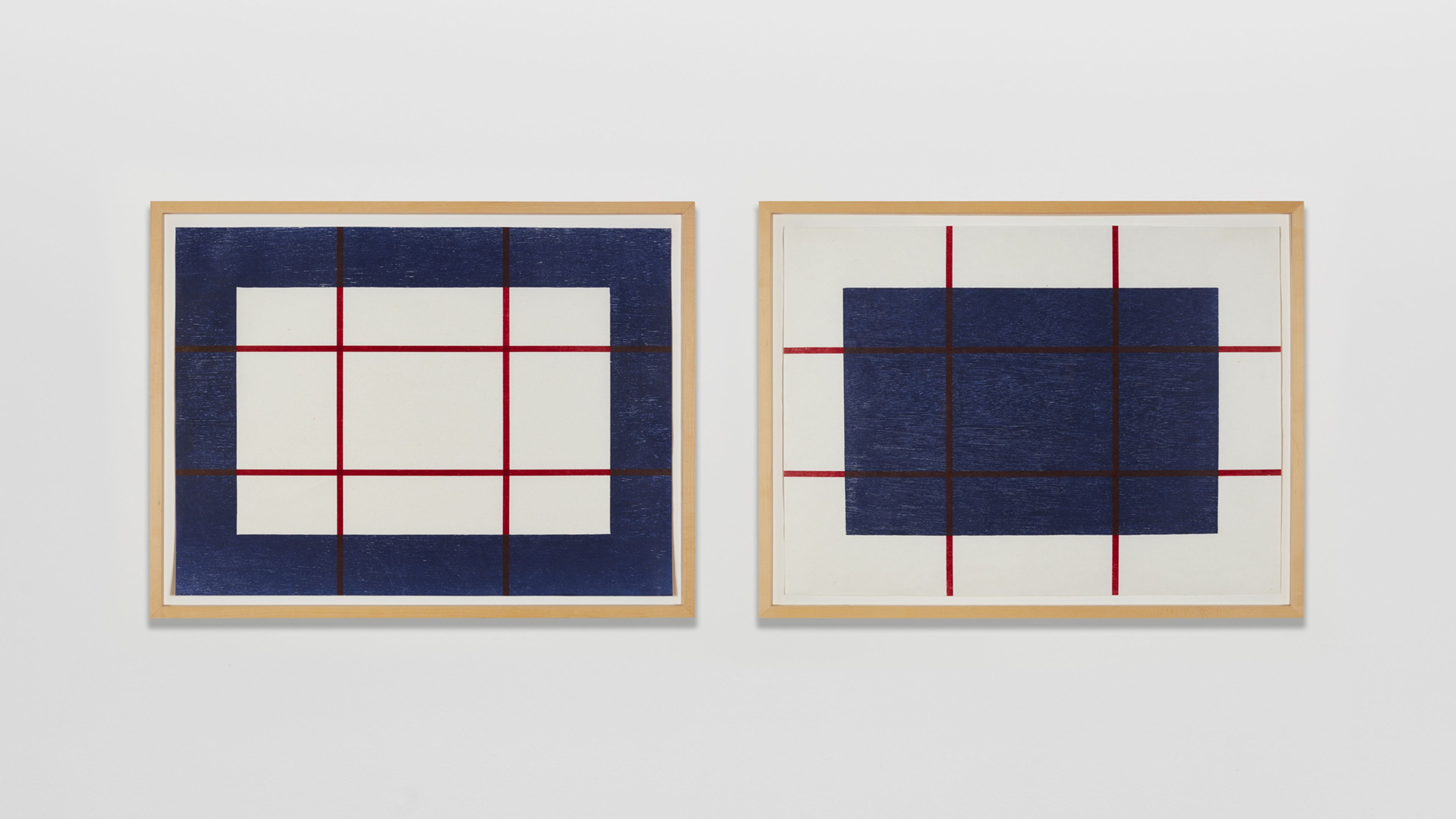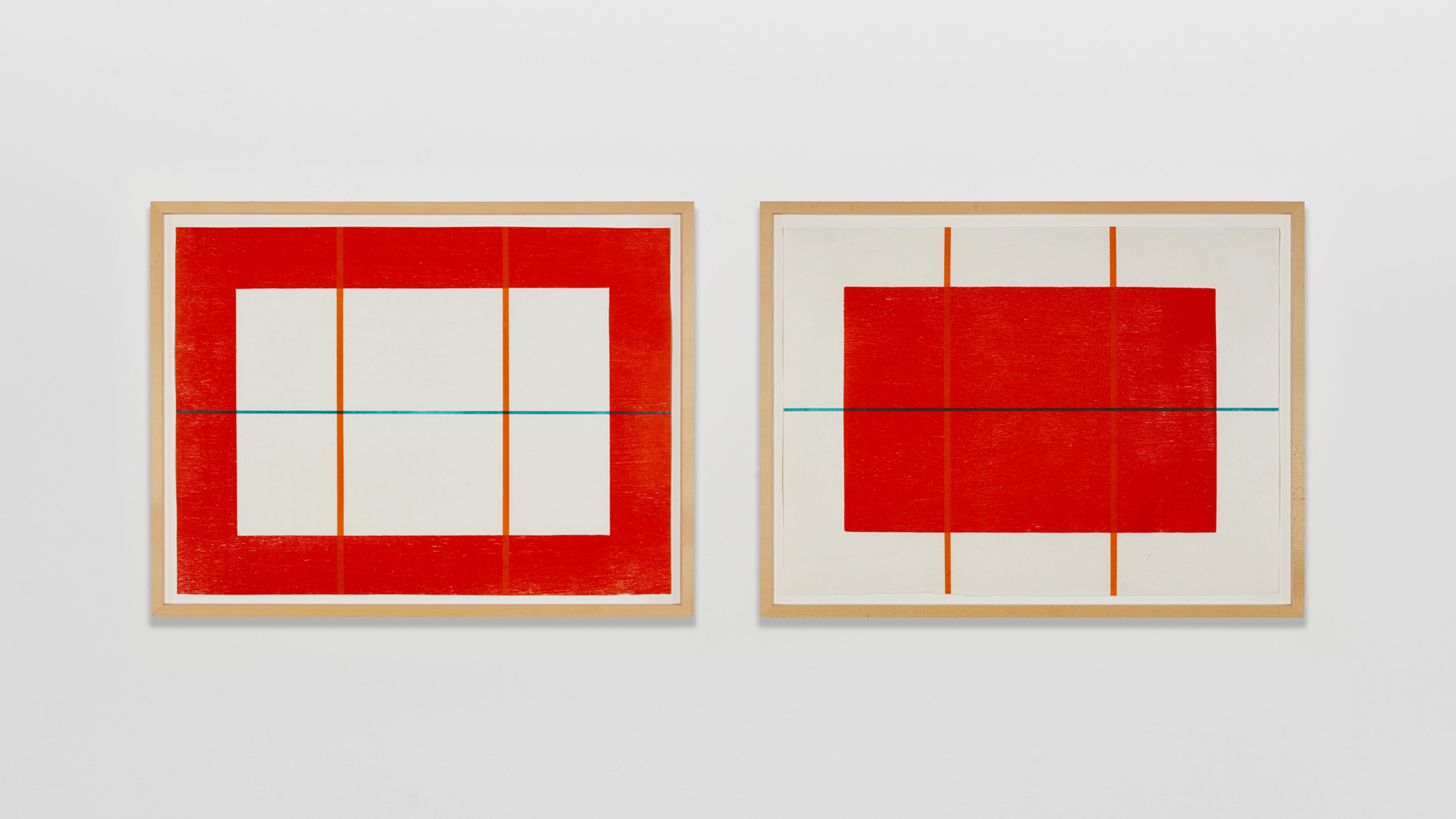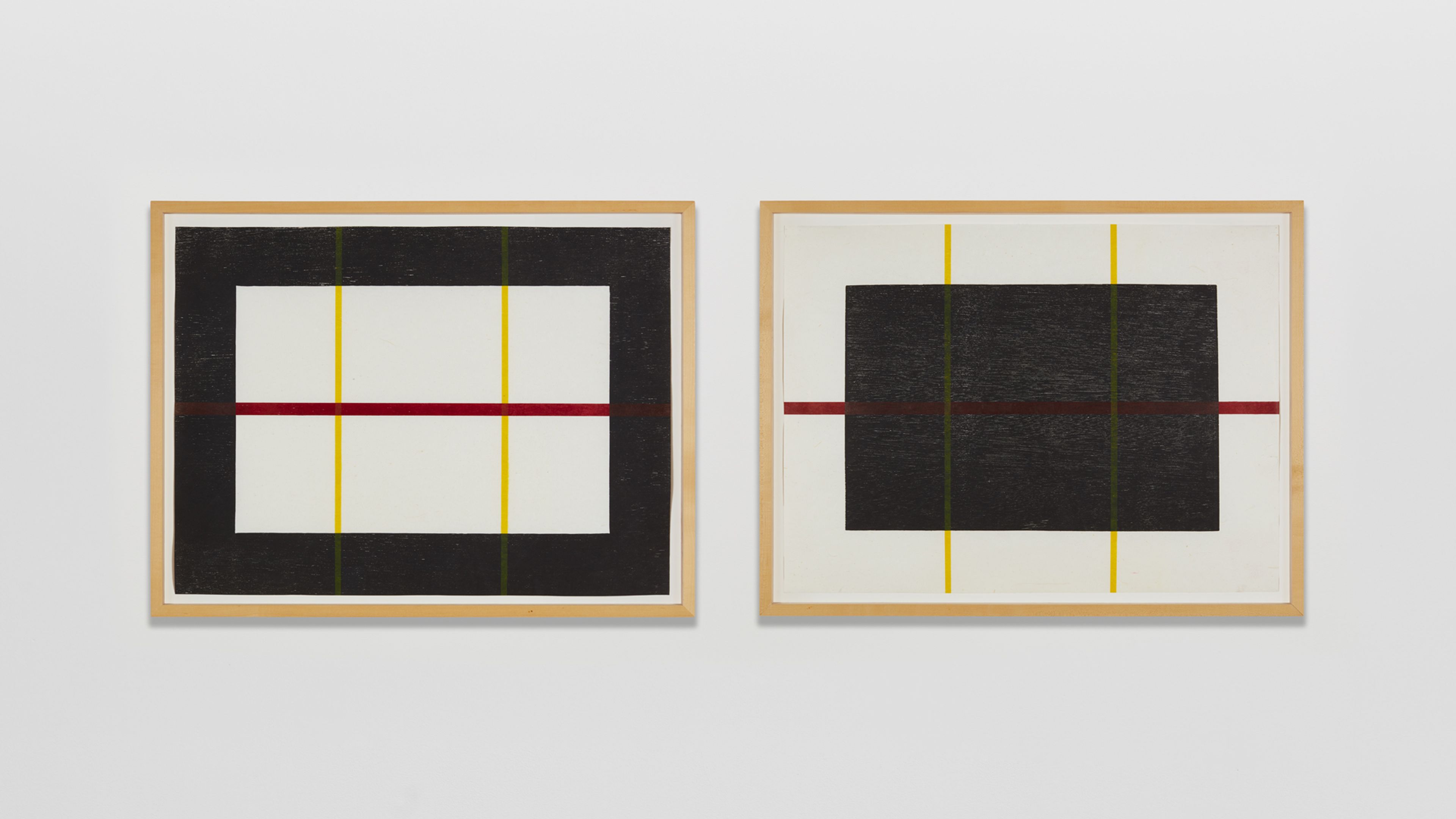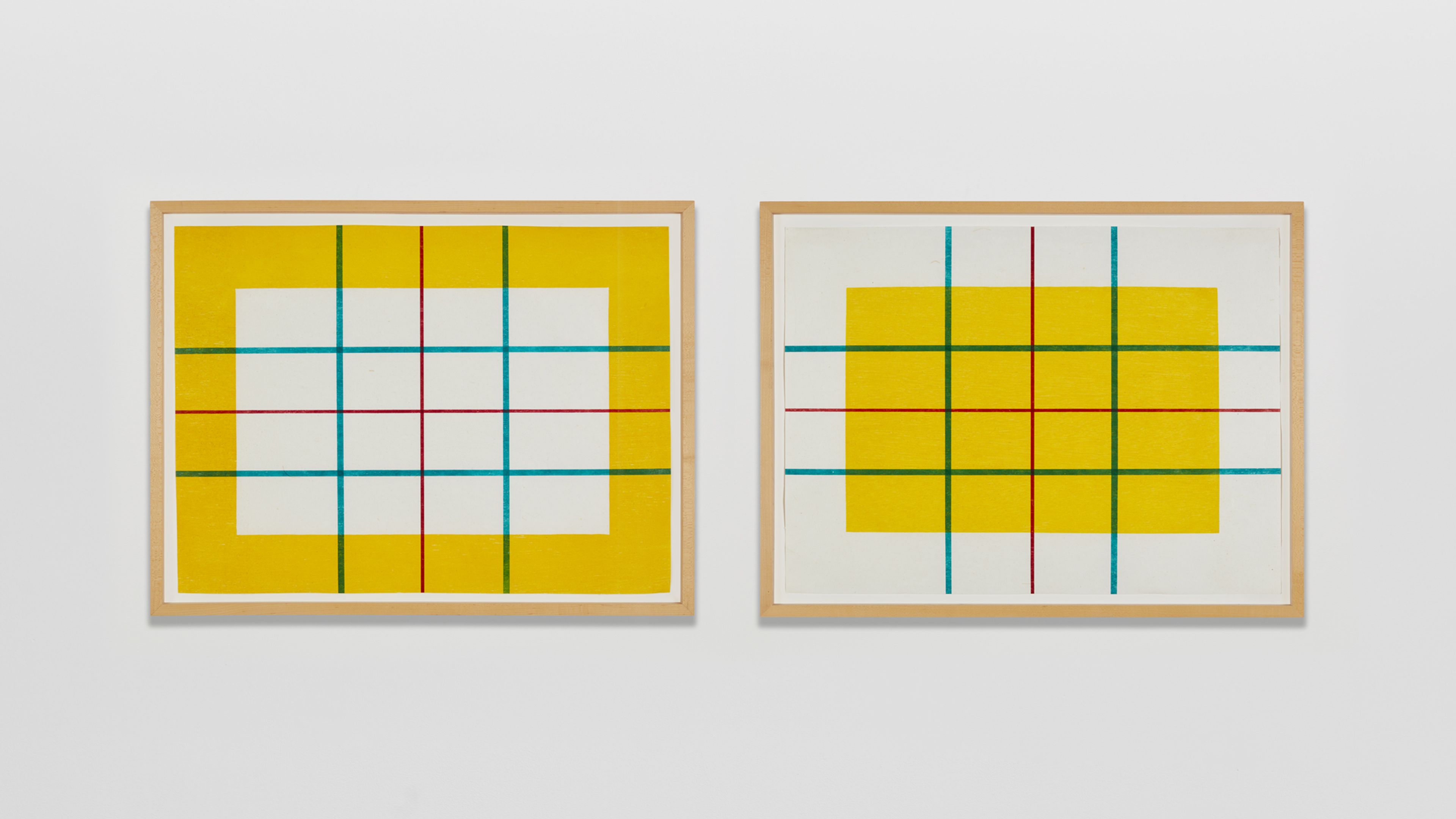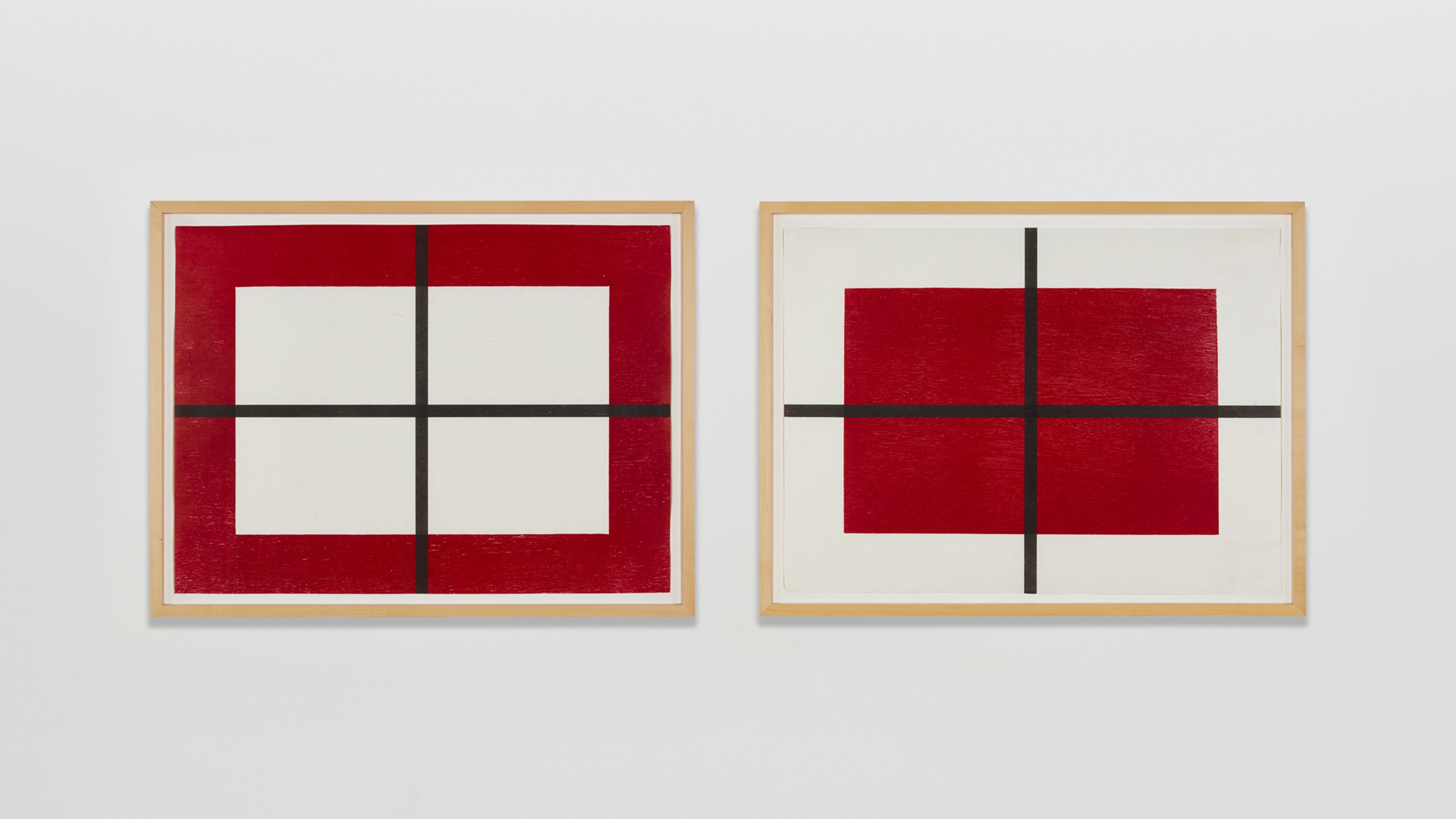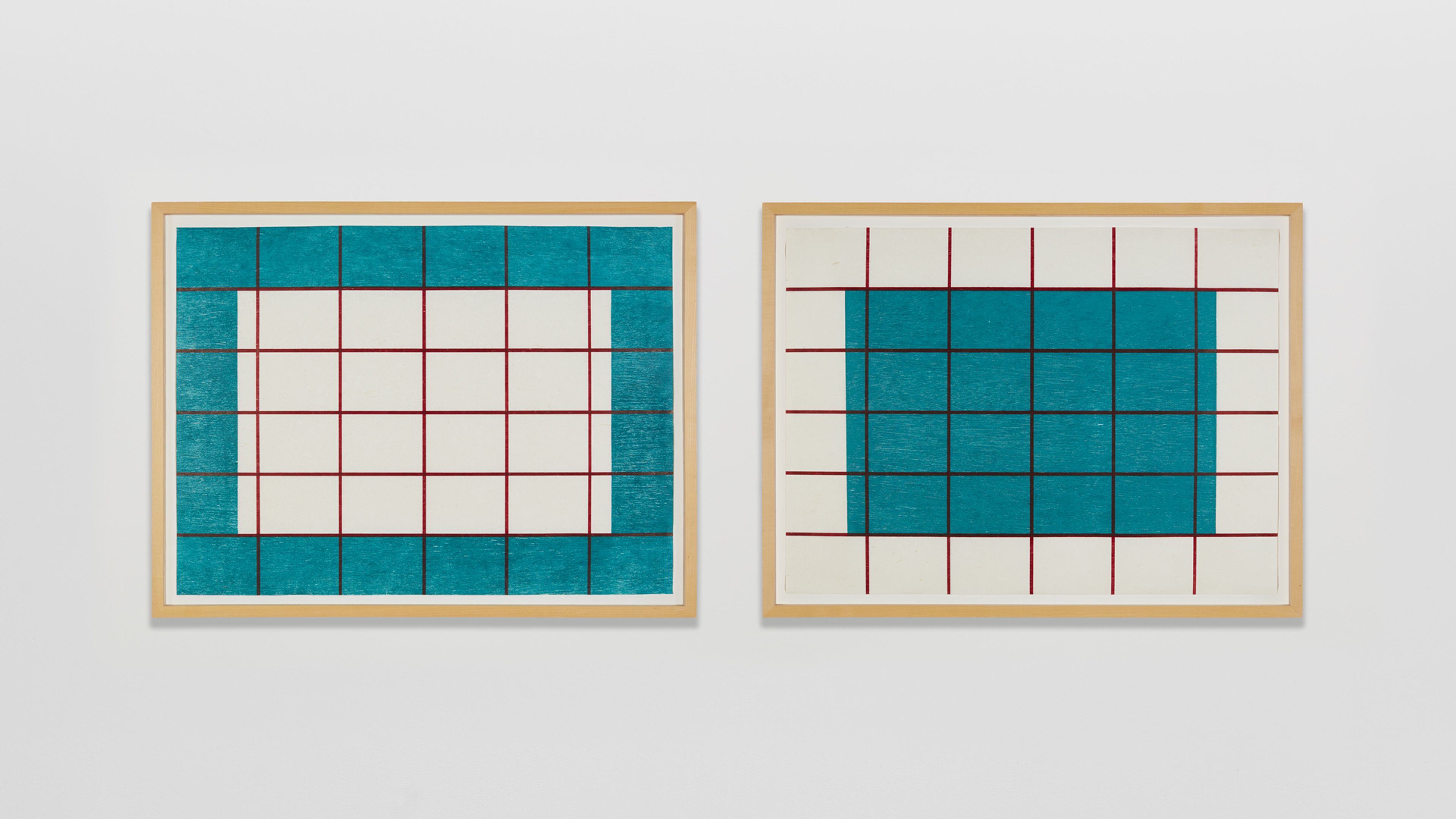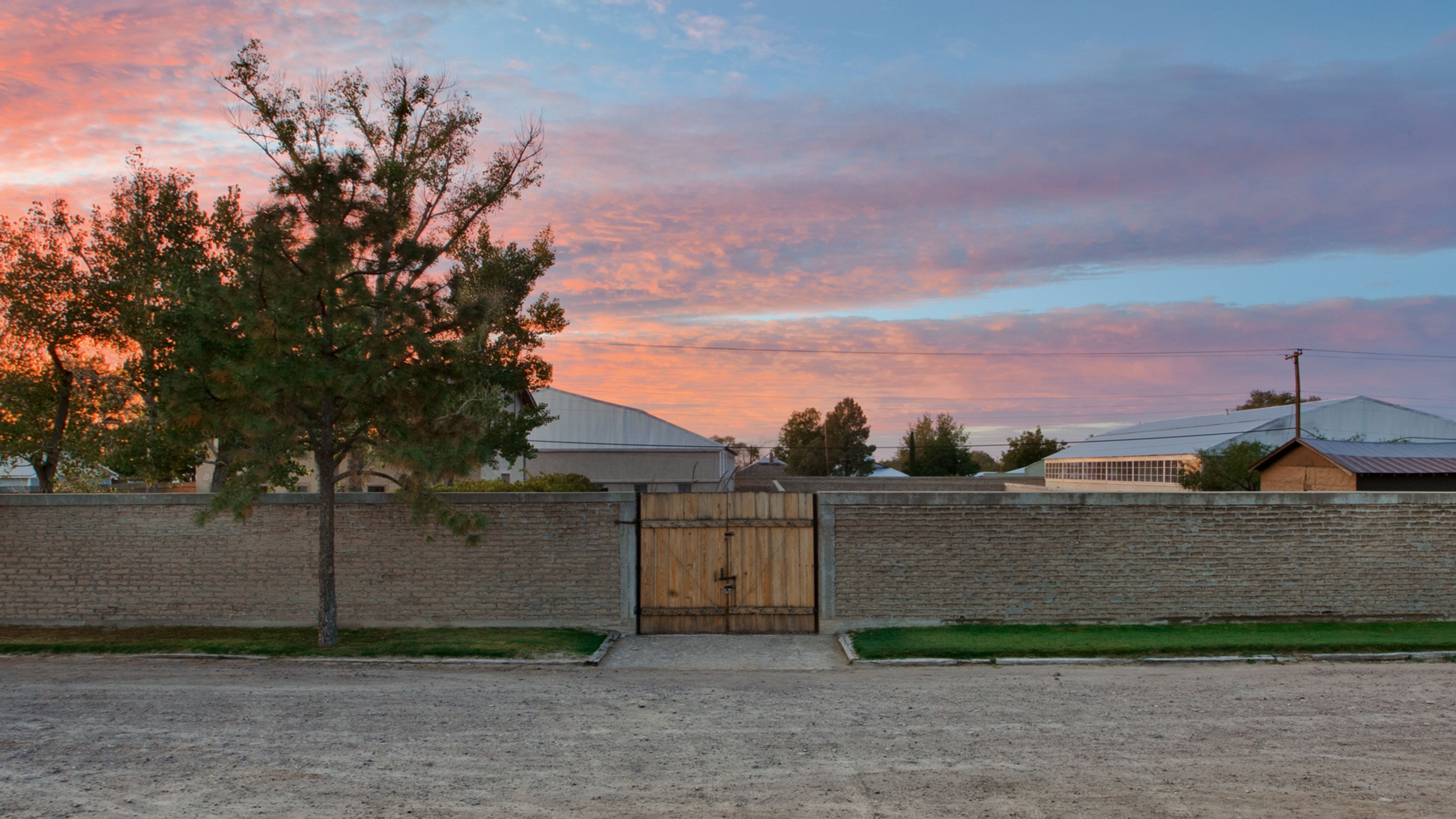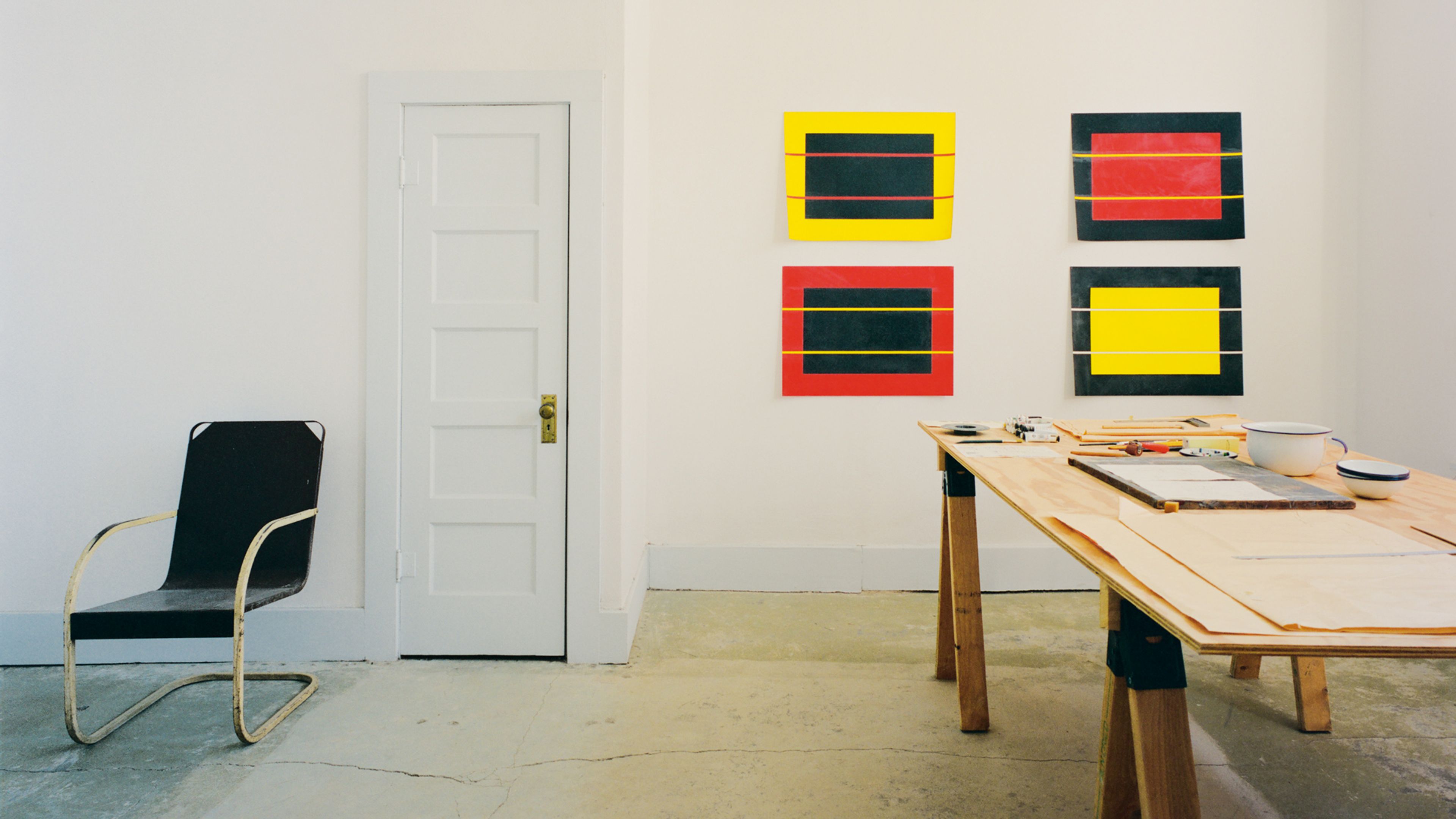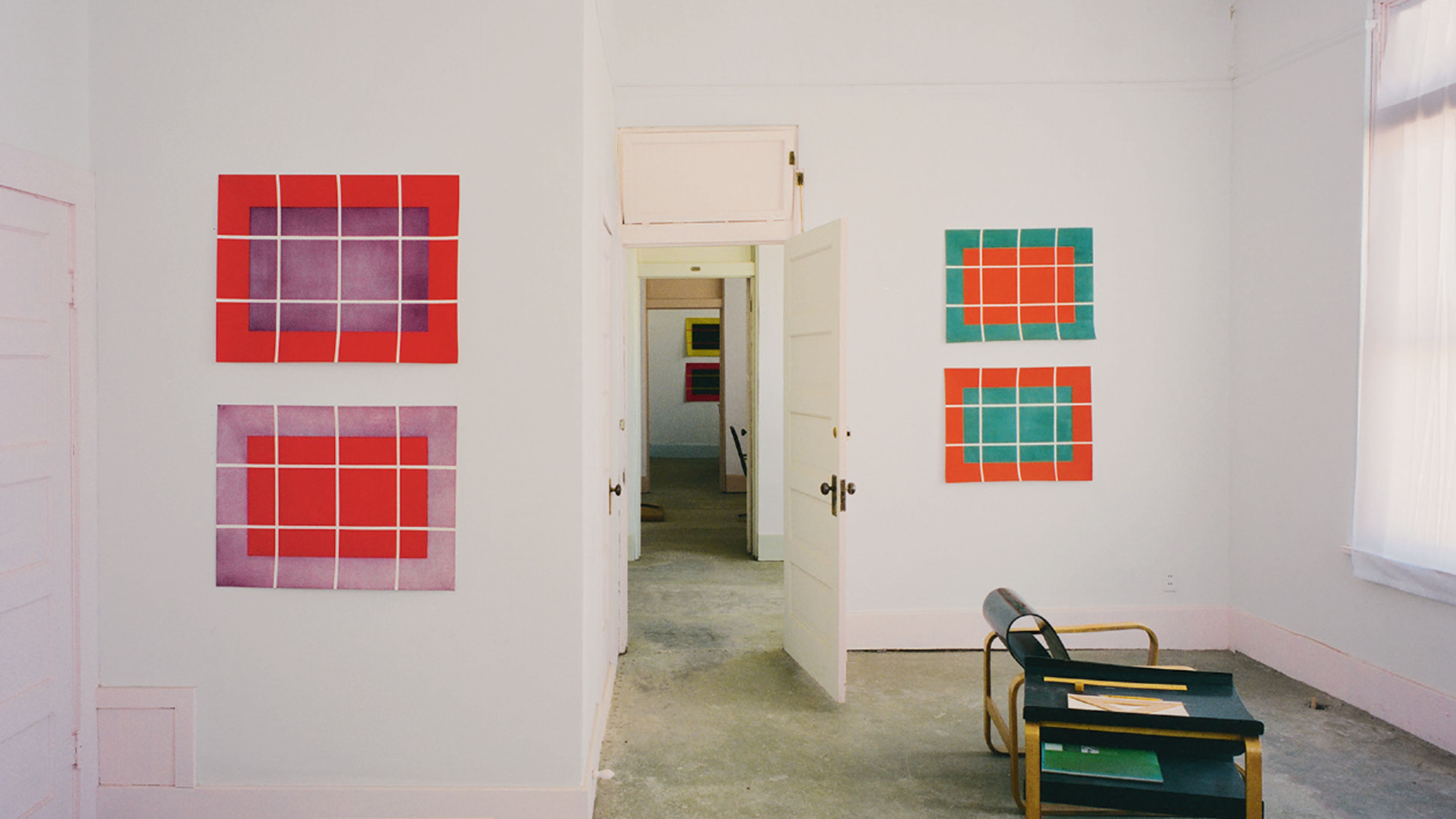Exceptional Prints: Donald Judd
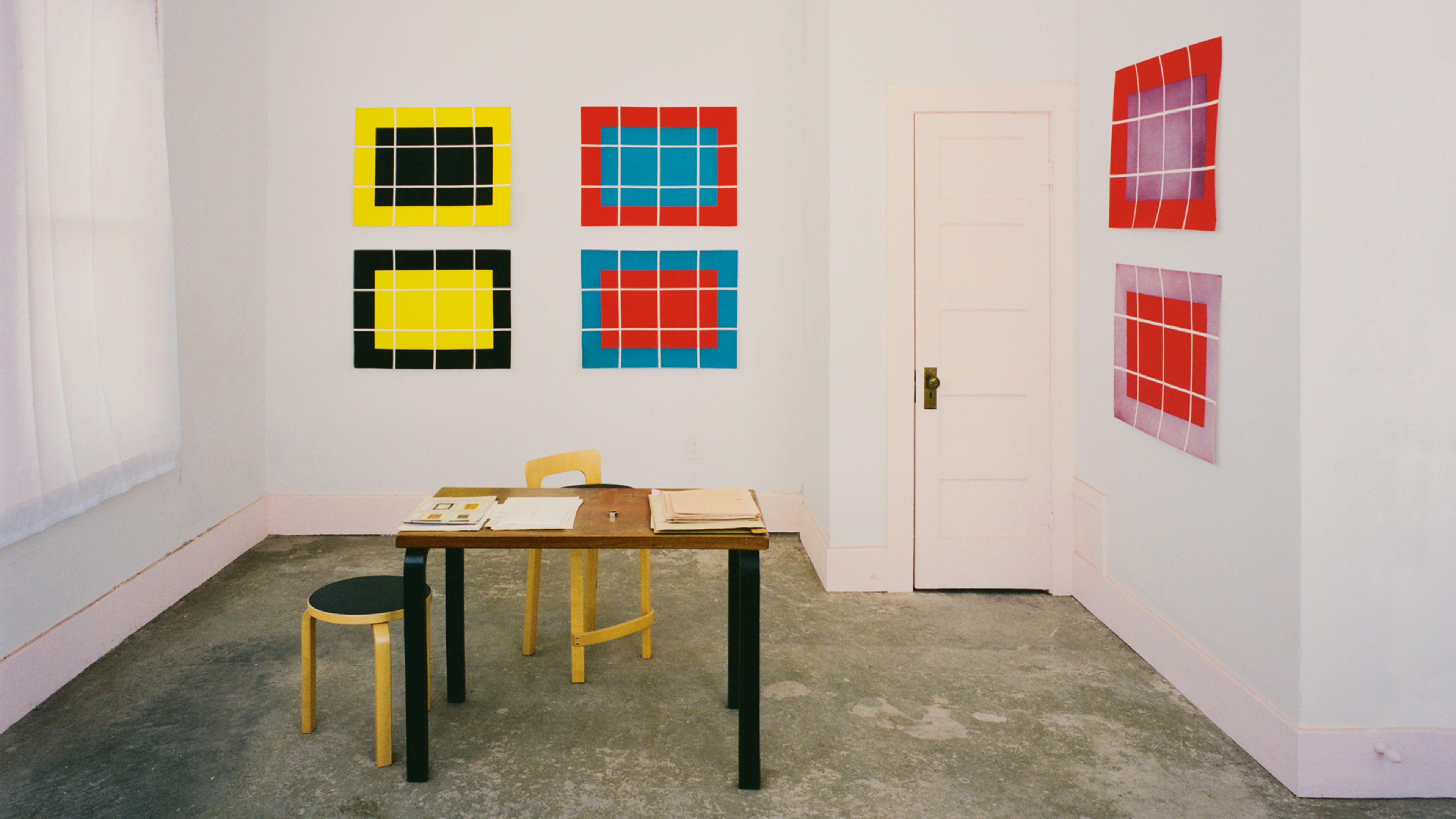
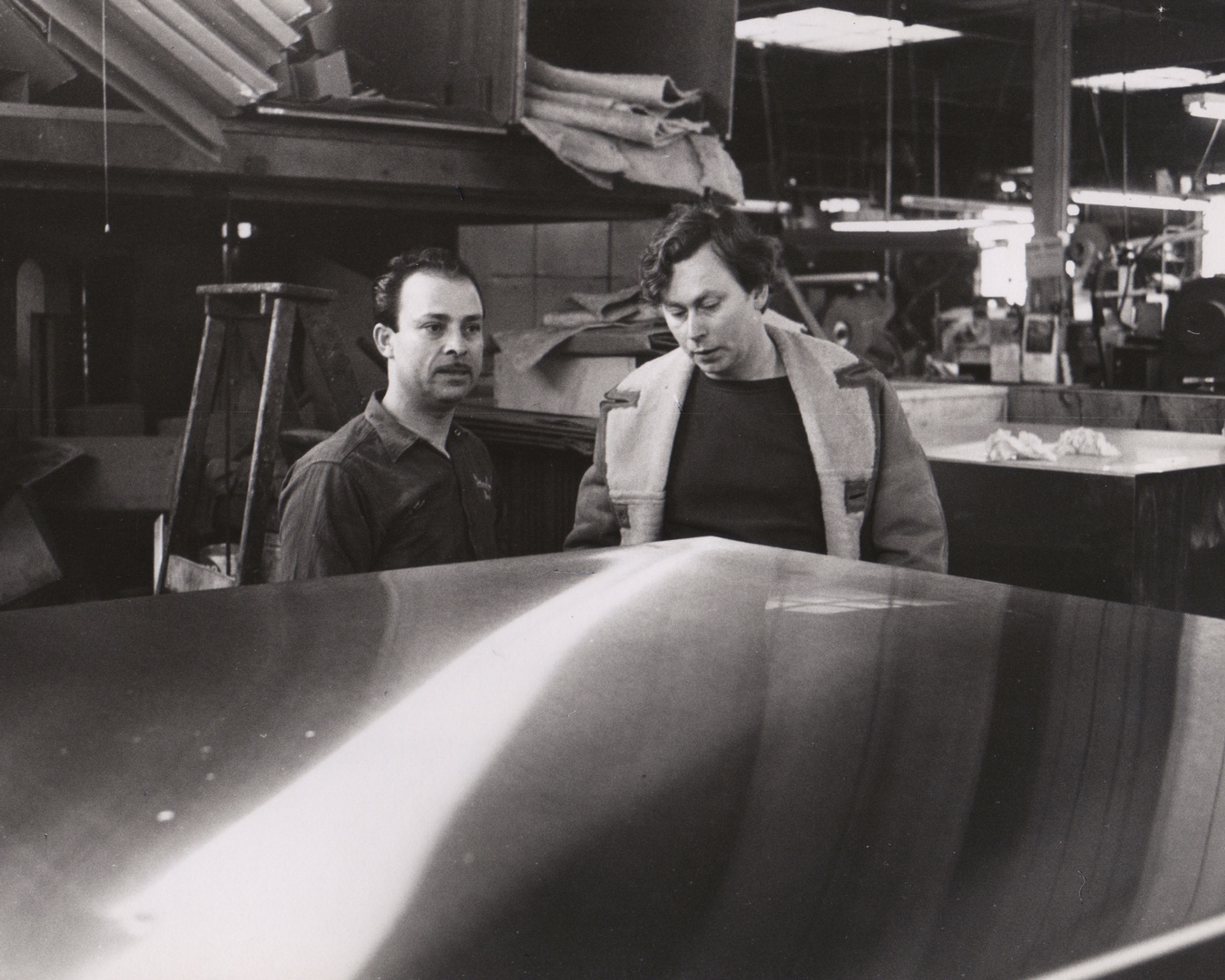
José Otero and Donald Judd at Bernstein Brothers, Inc., New York, 1968. Photo © Elizabeth Baker. Courtesy Judd Foundation Archives, Marfa, Texas
Judd made his first prints in 1951 while studying at the Art Students League in New York. Working first with lithographs, Judd turned to woodcuts as his dominant print medium as early as 1953. His father, Roy Judd, fabricated the original woodblocks for what would become his first large-scale series of prints. In 1964, Judd began to delegate the fabrication for his three-dimensional works. It was his early experience with printmaking that led to his working with fabricators and the “un-mediated art making” of his sculptural forms.
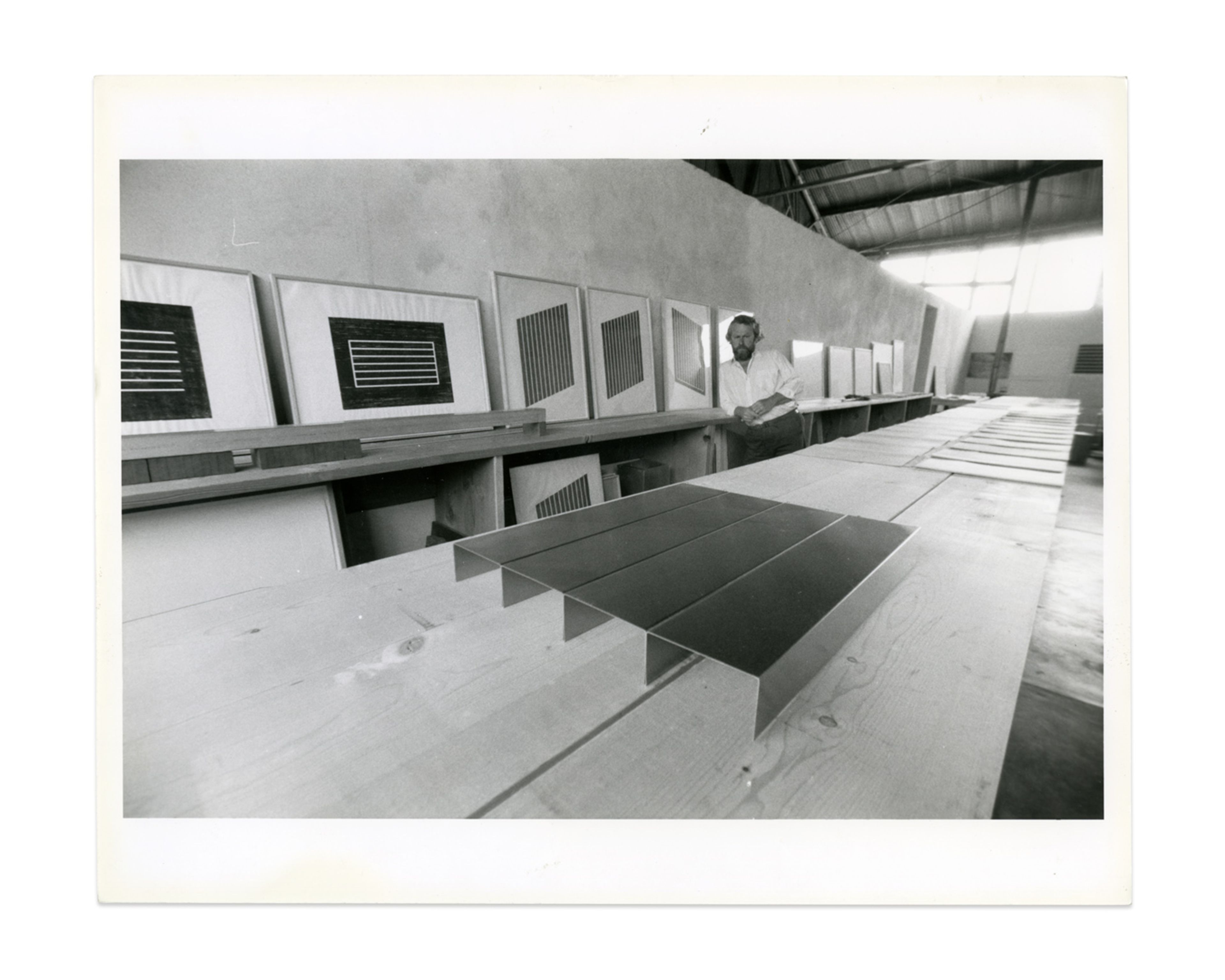
Donald Judd in his print studio at La Mansana de Chinati/The Block, Marfa, Texas. Photo by Jamie Dearing © Judd Foundation. Jamie Dearing Papers, Judd Foundation Archives, Marfa, Texas
The mechanical and collaborative components of printmaking had clear correlations with what became known as Judd’s aesthetic of minimalism (though he protested the term), and the medium continued to serve as an avenue for Judd’s continued exploration of space, color, and material.
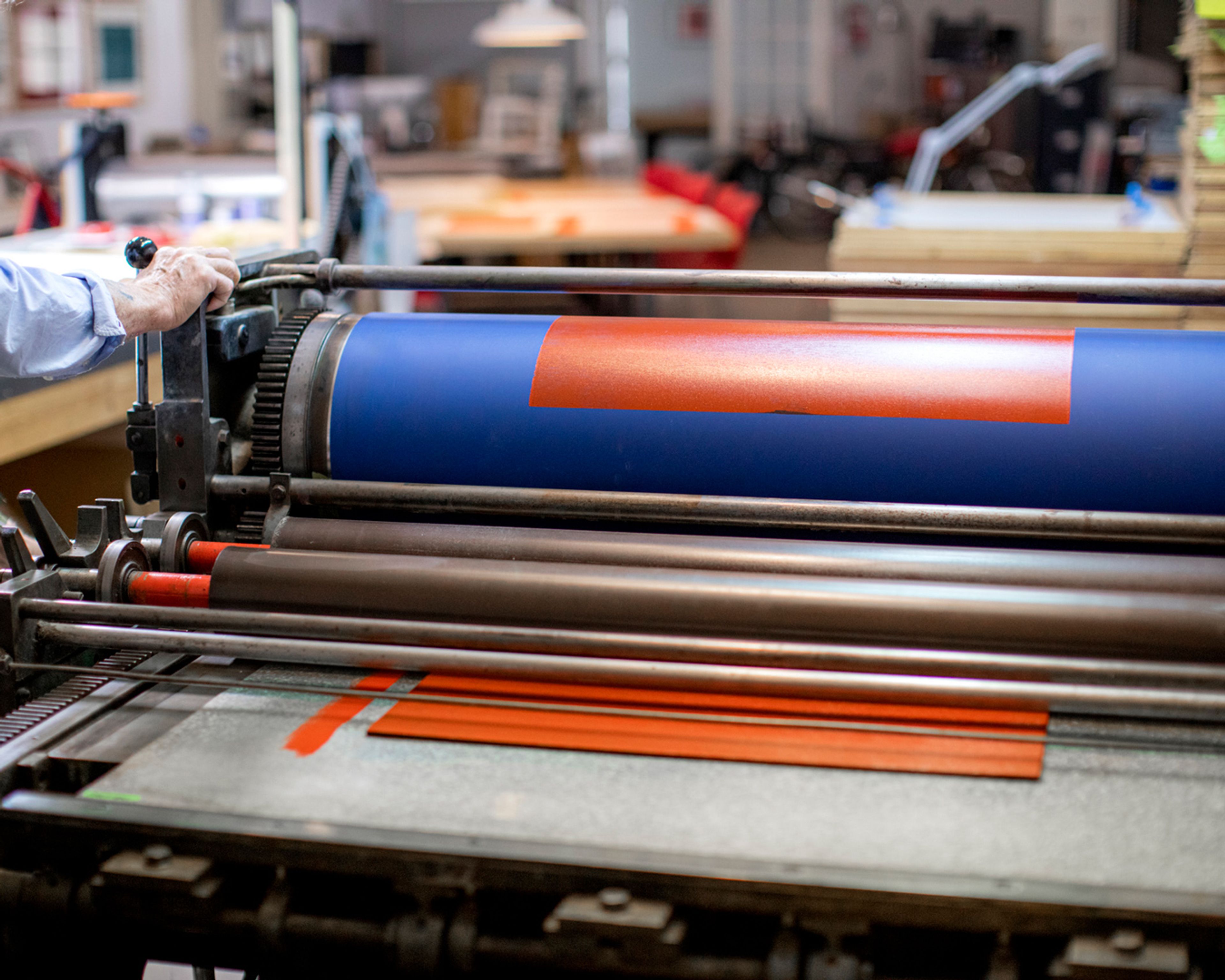
Donald Judd, untitled, 1992–1993/2020, in progress. Arber and Sons Editions, Marfa, Texas. Photo Alex Marks © Judd Foundation
Two proofs were made from 1992 to 1993 with Tamarind master printer Robert Arber in Marfa, though Judd was not able to complete the edition before he passed away in 1994. In 2020, Judd Foundation worked with Arber to complete the edition and publish the prints using the original proofs, with proceeds directed toward Judd Foundation’s Marfa Restoration Plan.

Donald Judd, untitled, 1992–1993/2020 (detail). Arber and Son Editions, Marfa, Texas. Photo Alex Marks © Judd Foundation.
While Judd regularly printed in one or two colors in his earlier works, by the mid-1980s he began using multiple colors in his woodcuts. This edition marks Judd’s most extensive use of color in his print practice. The wood grain from the mahogany block features prominently in the large swaths of color.
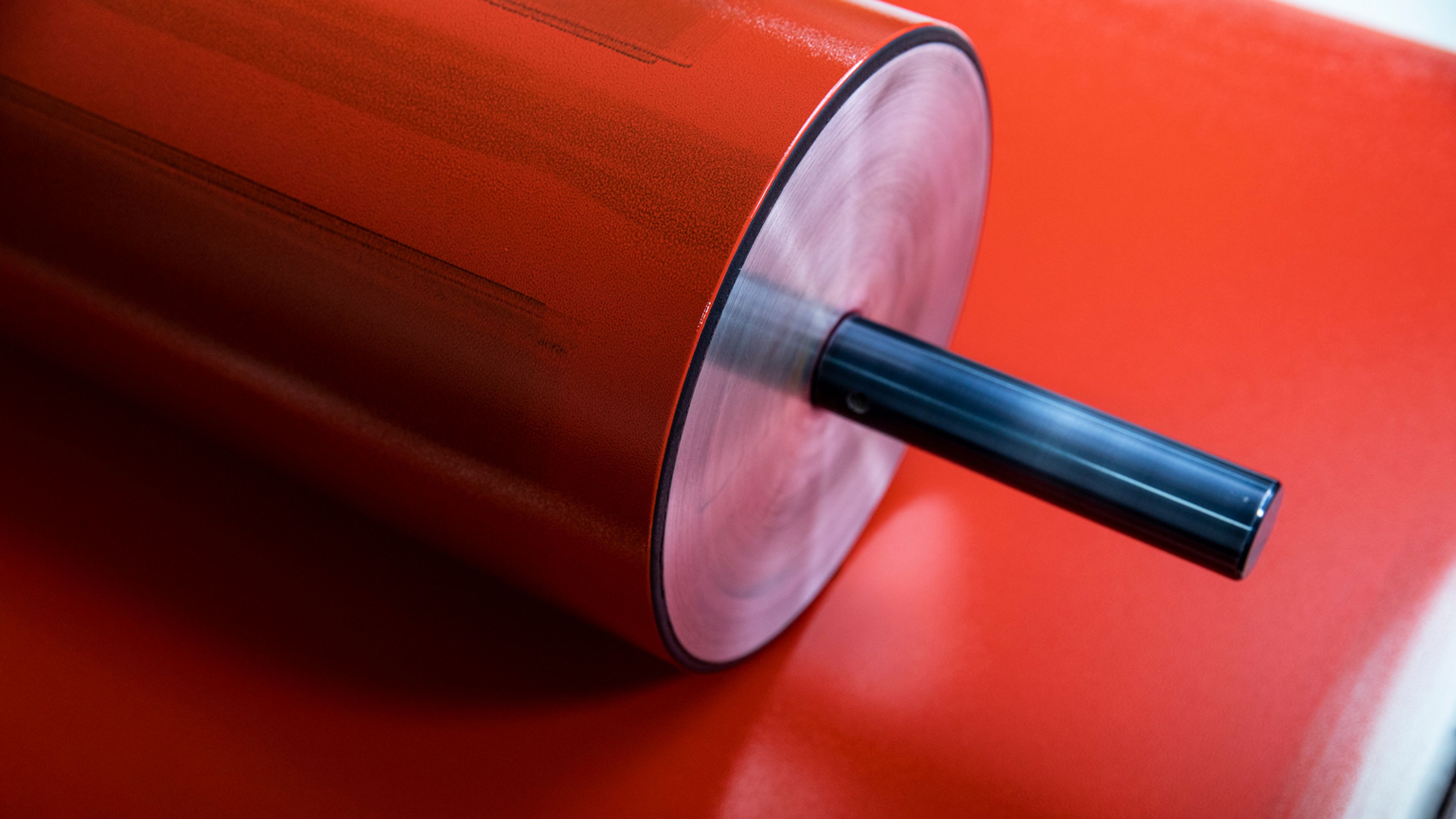
Donald Judd, untitled, 1992–1993/2020, in progress. Arber and Sons Editions, Marfa, Texas. Photo Alex Marks © Judd Foundation
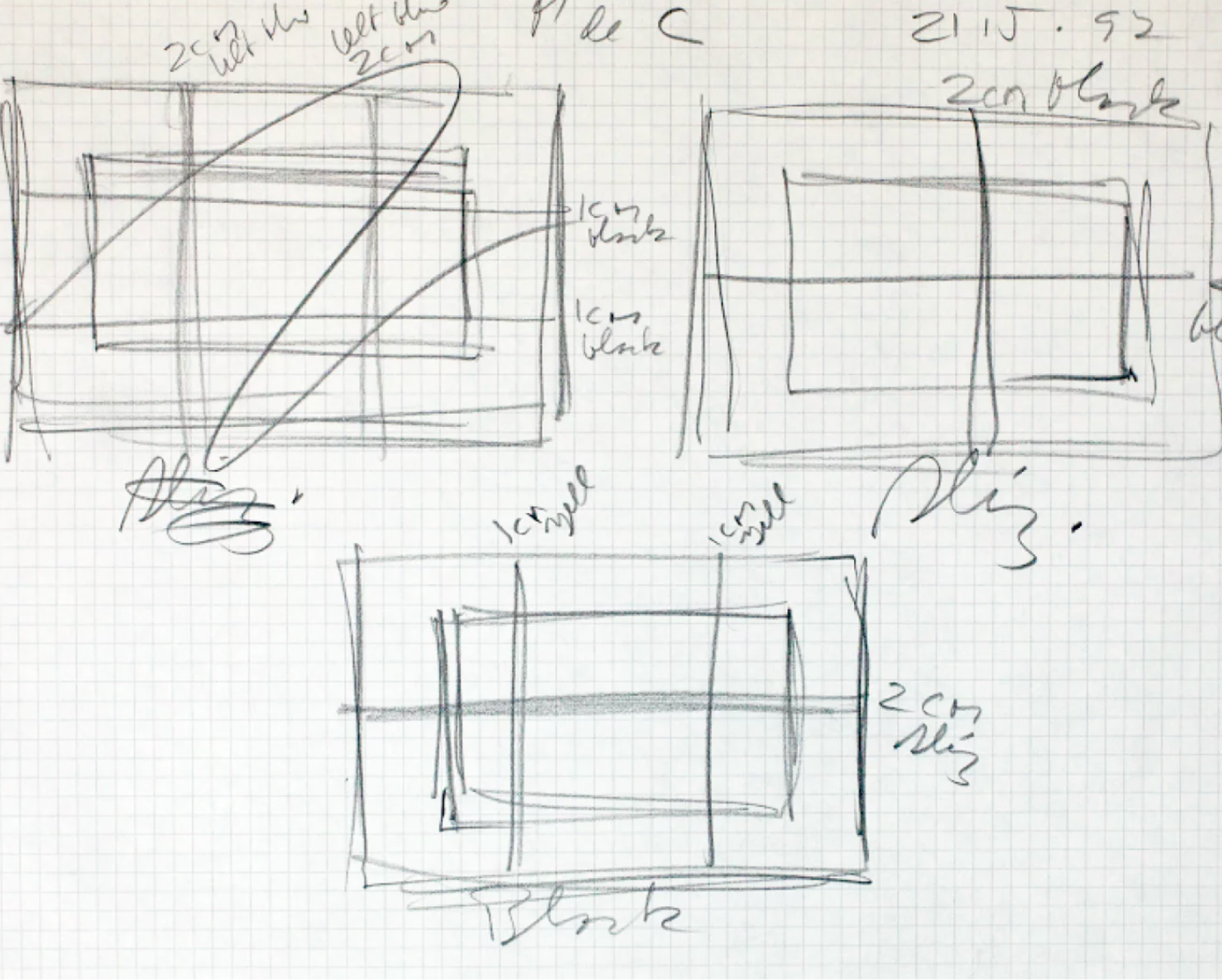
Donald Judd, drawing for prints, 1992. Pencil on paper, 8 1/2 x 11 inches (21.6 x 27.9 cm). Courtesy Judd Foundation Archives, Marfa, Texas
In this series, each pair includes one impression with a printed frame of color and another where the same color is reversed and printed in the interior space of the frame. The dividing vertical and horizontal lines are specific to each pair, creating proportions of 1:2, 1:3, 1:4, and 1:5.
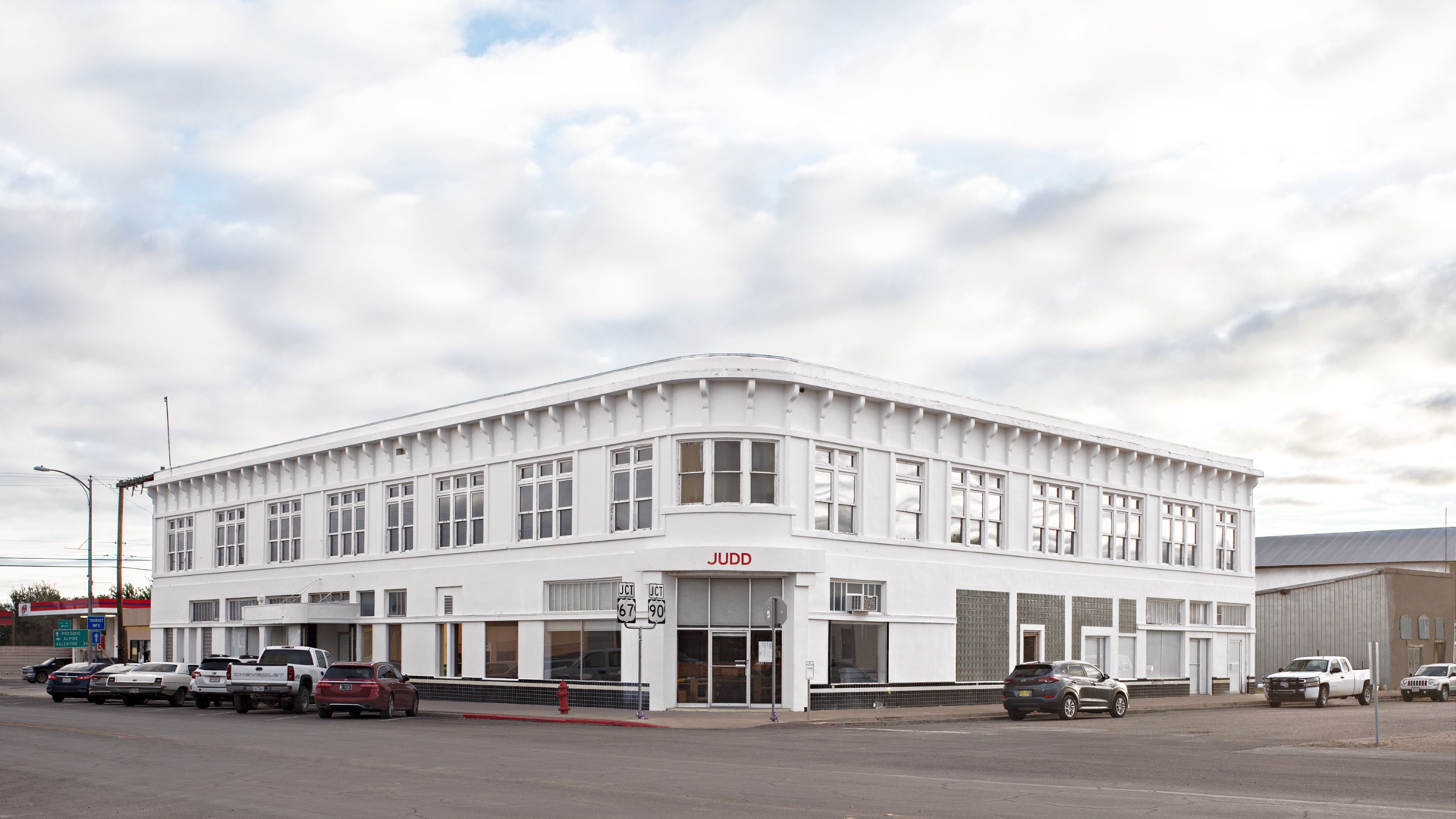
Exterior, Print Building, Judd Foundation, Marfa, Texas. Photo by Alex Marks © Judd Foundation

Images in GIF: Josef Albers, Midnight + Noon VI, from Midnight + Noon, 1964; Honoré Daumier, Le Salon de 1857; Stuart Davis, Detail Study for Cliché, 1957
Judd’s long-term work with prints and collection of works by other artists, including Josef Albers, Stuart Davis, and Honoré Daumier, attest to his interest in the relationship between artists’ prints and their broader practices. These prints are installed throughout Judd’s spaces in New York and Texas.
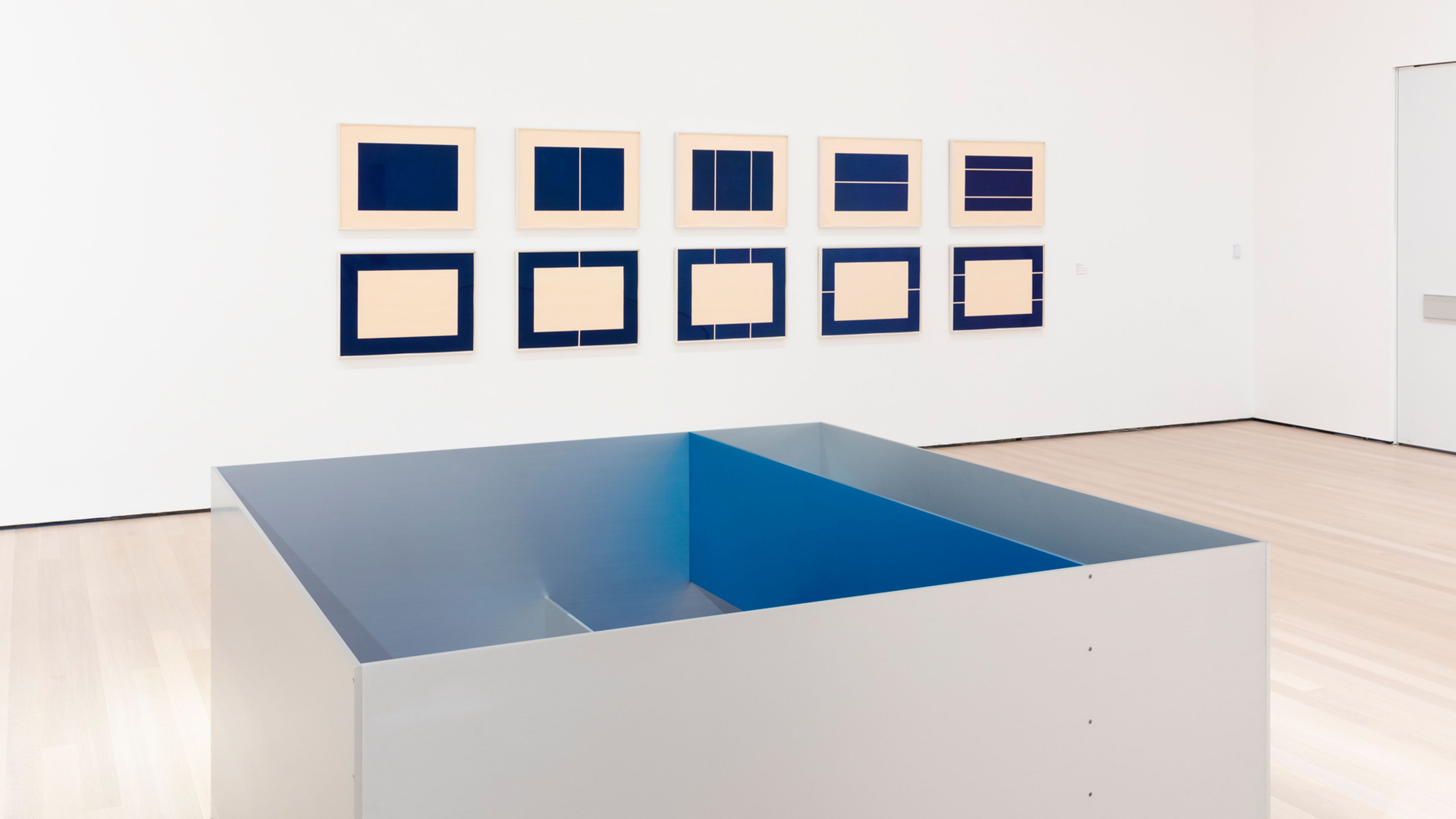
Installation view, Judd, The Museum of Modern Art, New York, 2020. Digital image © 2020 The Museum of Modern Art, New York. Photo by Jonathan Muzikar All Donald Judd Artwork © 2020 Judd Foundation/Artists Rights Society (ARS), New York

Interested in Works by Donald Judd?
